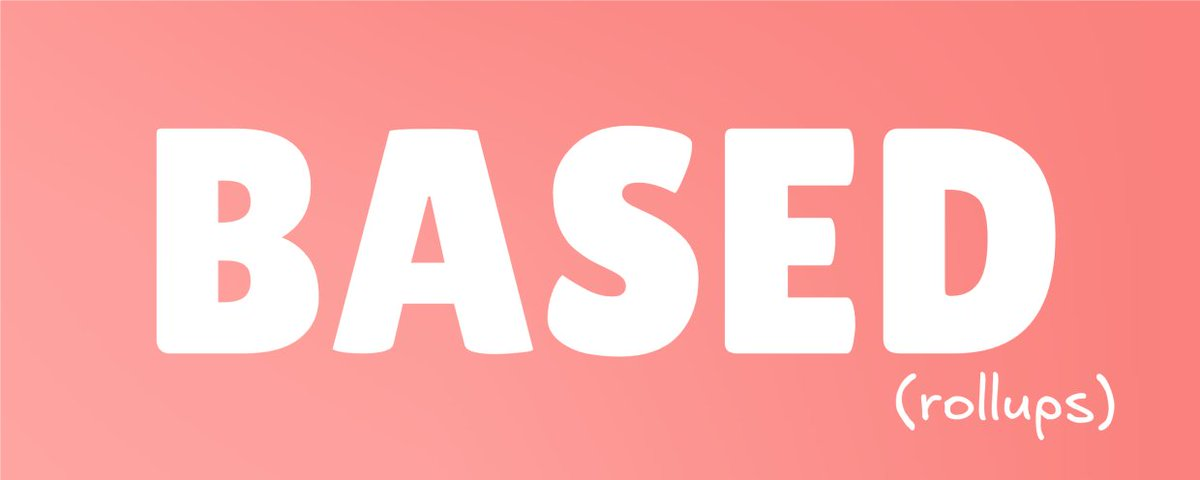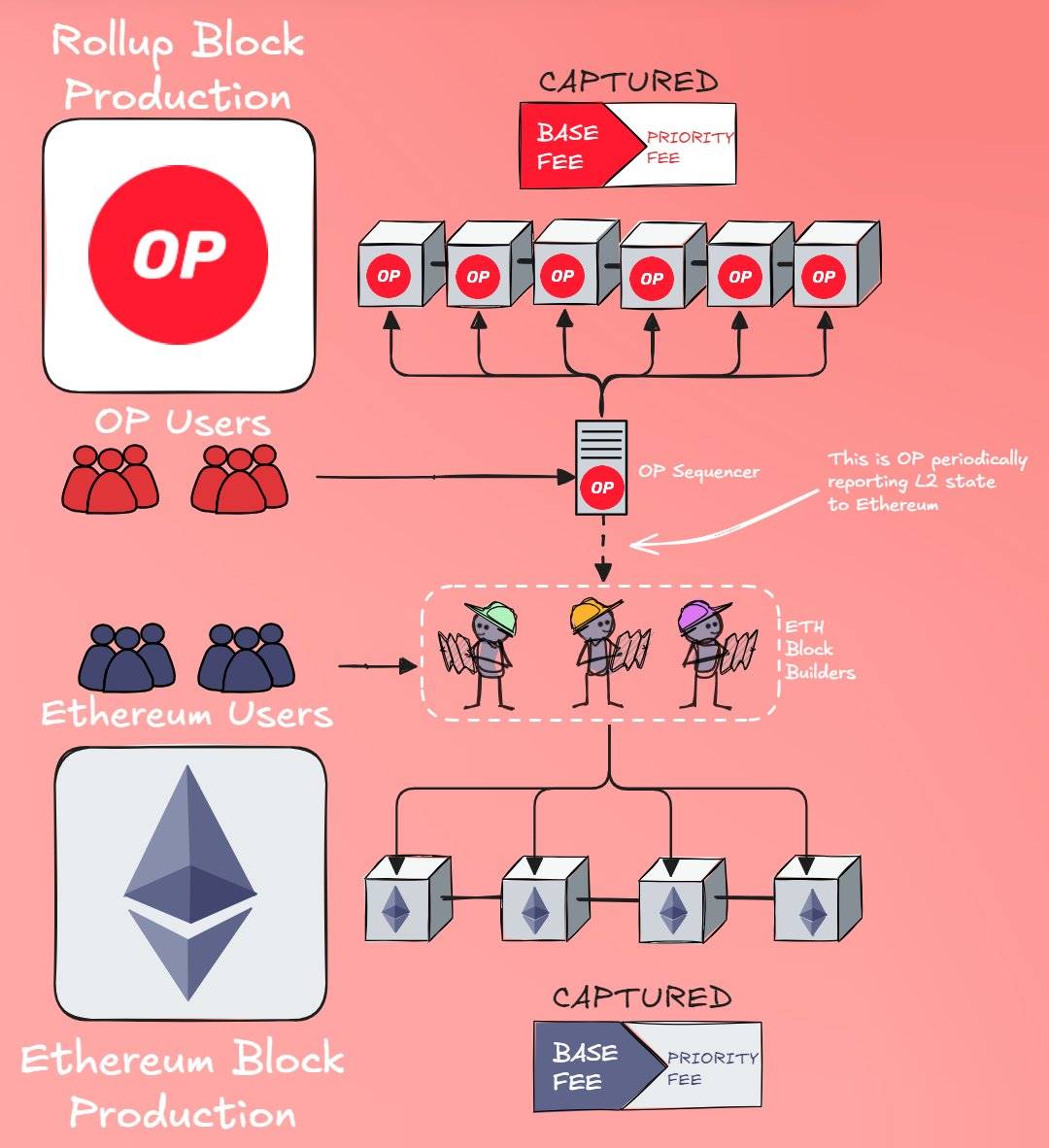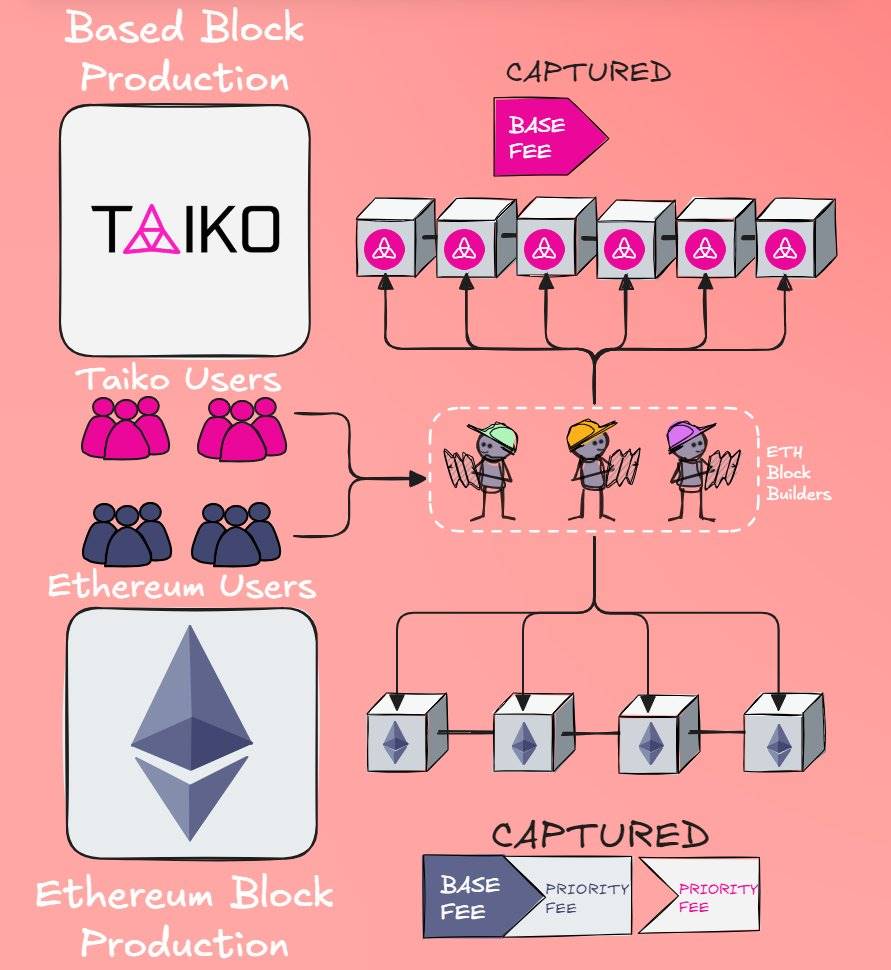Original author: BREAD
Original translation: TechFlow

If you’ve heard any discussion about L2, you’ve likely heard of “Based” rollups.
They differ from “Optimistic” and “Zero Knowledge (ZK)” rollups in that they are considered more synergistic with the Ethereum mainnet.
Here are the reasons (with pictures).
We’ll start with the basics (simple explanation of terms — I promise it’s brief), then move on to “normal” blockchains, and finally the structure of Based™️.
Terminology
First, lets understand some terminology and key roles.
Role
Sorter : A machine run by the L2 team that collects user transactions, determines the order in which they are packaged in the L2 block, and finally submits them in batches to L1.
Block builders : These roles are part of the pipeline equivalent to the sorters in the Ethereum mainnet. They receive user transactions (which can be public or private), sort them in a specific way to maximize profits, and finally pass the transactions to the validators to form blocks.
Key Terms
Base fee : This is the minimum fee a user needs to pay to enter a block, and its price is determined by the network congestion level. (For example, if the gas utilization rate of the 10th block exceeds 50%, the minimum fee of the 11th block will increase). This fee will be destroyed on Ethereum and some L2.
Priority Fee : This is the “extra fee” or “tip” you are willing to pay on top of the base fee in order to get priority in a block (i.e. your transaction is executed first in that block).
Understanding this, you can see why Based rollups are different from what we are used to.
Ethereum Block
First, let’s understand how Ethereum blocks are generated and which terms are key.
Please see the following figure:
Now, lets explain the process in detail:
Ethereum users submit their transactions to block builders .
These transactions specify the maximum fee the user is willing to pay, which will be used to pay the Base fee (which is burned), with the remainder as a priority fee/tip (retained by the builder ).
The builders then hand these blocks over to validators for inclusion into the Ethereum main chain.
Ultimately, all fees paid by users are either captured by $ETH assets (via burning) or captured by participants in the Ethereum block construction supply chain (such as builders ).
The former mechanism is seen as a neutral alternative to direct public goods funding, while the latter provides incentives for a key part of the Ethereum block construction process. Both are generally considered to have a positive impact on the value of the entire network.
Now, lets look at a typical L2.
Traditional Rollup Block
Taking Optimism as an example, we can keep a similar structure to Ethereum and simply replace the builders (a collection of competing entities) with the sorter (a single machine operated by the team behind Optimism).
Visualization:
Looking at the process again, youll see that they are very similar:
Optimism users submit transactions to OP sorters .
Similar to Ethereum, these transactions state the user’s maximum fee, covering the base fee (which the OP Stack chain destroys, but not all L2s do, such as Arbitrum), and the remaining fee difference is kept as a priority fee/tip (retained by the team running the sorter).
The sorter then sorts the transactions, proposes the next block to be included in the canonical chain, and updates the L2 state/world view to the mainnet Ethereum.
It is important to note that the end user’s relationship and 100% of the fees they pay are owned by the sequential entity (i.e., they stay within the L2 ecosystem). Whether that entity is Optimism, Base, Arbitrum, or Blast, it is entirely at their discretion how those fees are used.
Some entities will destroy the base fee and keep the priority fee (Base).
Some distribute both fees to token holders (Arbitrum).
Others will return some of the funds to on-chain developers (Blast).
But BREAD, if L2 captures all these fees, how does Ethereum benefit?
So, let’s discuss how these two block building processes relate to each other.
Traditional Rollup + Ethereum Block
As usual, lets start with a visualization:

As you can see, not much was added (just a single line) to connect these two separate block building processes together.
This line indicates that L2 orderers periodically publish data to the Ethereum mainnet so that L2 can provide some security guarantees to users (such as forced inclusion).
It is important to note that Ethereum has no control over when any particular L2 publishes transactions, which means that the frequency and efficiency of publication is entirely in the hands of the submitter.
Overall, this is quite beneficial for traditional L2s, as they are able to not only capture all fees generated within the ecosystem, but also control the largest expenses (posting to the mainnet), which is completely voluntary.
Halftime break, lets review
We’ve laid the foundation for what’s coming next. Here are the most important points from the traditional concepts so that we can focus on what makes Based unique:
Ethereum blockchain is built by competing, unconnected parties
Traditional rollup blocks are built by the sorter operated by the rollup team
Each block construction process captures 100% of the fees within its ecosystem, and Ethereum and L2 are connected through a voluntary L2 release frequency
Now, let’s take a deeper look at Based™️.
Based Rollup + Ethereum Blockchain
The reason we dont need to start with a graph containing Based-only content is that Based constructions are relatively simple (which is part of their elegance).
They asked the question: “Why don’t we just use Ethereum as a sorter?” So they did this by leveraging the builders we mentioned in the Ethereum block construction section.
Visualization using @taikoxyz :

You might ask, how does this process work? In fact, the process is not much different from the traditional rollup, but there are some subtle differences in the user experience.
The process is as follows:
Users send transactions to L1 builders who choose to build blocks for Ethereum and Based L2.
Users specify the maximum fee they are willing to pay.
L2 captures the Base fee (determined by L2 congestion) and passes the priority fee/tip to the L1 builder , who is responsible for ordering transactions.
In this paradigm, Ethereum not only captures 100% of the fees within its ecosystem, but also captures a portion of L2 tips and the issuance costs of settlements.
In return, Based L2 inherits the following advantages:
Ethereum liveness (Based L2 will continue to run as long as Ethereum is processing blocks; if the single orderer of a traditional rollup fails, the chain may be suspended),
The ability to atomically compose with L1 state (meaning that transactions on L2 can interact directly with L1 liquidity, e.g. swaps on L2 can leverage L1 liquidity).
Of course, this close connection to Ethereum also comes with some disadvantages, as the Based team needs to sacrifice some profitability (such as priority fees ) and must also deal with challenges related to Ethereums mechanics (for example, its 12-second block time).
While these issues can be mitigated through mechanisms such as pre-confirmation, they still need to be carefully considered.
Review and Outlook
So, can Based Rollups solve our L1<>L2 economic relationship problem and become the future of Ethereum?
Perhaps, I am skeptical that many teams will choose to use Based Rollups, as it directly affects their profitability. However, thankfully, some of their advantages in L1 atomic composition are attracting developers, so we can at least see related experiments being carried out.
There is an interesting research going on between @gwyneth_taiko and @Spire_Labs called Next Generation Based Rollups. They emphasize that L1 applications can run their own Based AppChain, capture priority fees, and maintain composability with L1 contracts. This is a direction I will be watching closely.
If Ethereum’s rollup ecosystem had been Based from the beginning, I believe its narrative position would be better today, but that’s how life works.










